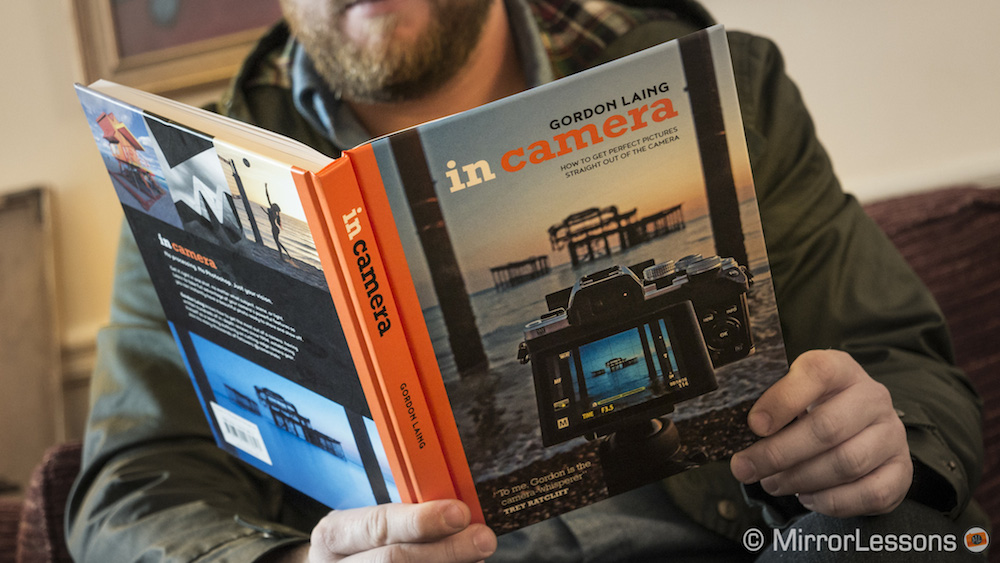Those who like to keep current with the advances in digital photography will certainly be familiar with the name Gordon Laing. Editor and creator of the popular Camera Labs website, he has solidified his position as one of the most eminent technology journalists on the internet, penning impressively in-depth camera and lens reviews that often run to over 20,000 words each.
We’ve had the pleasure of meeting Gordon in person on multiple occasions at press events and photography shows and we never cease to be impressed by his knowledge, energy and enthusiasm for all things photography related!
Ethics statement: Within the article, there are affiliate links. If you buy something after clicking the link, we will receive a small commission. Don’t worry – prices remain the same for you. To know more about our ethics, you can visit our full disclosure page. Thank you!
‘In Camera: How to get perfect pictures straight out of the camera’ is Gordon’s very first photography book and stands out from the crowd for one particular reason. Instead of teaching you how to make the most out of your RAW files in post-production, which tends to be the focus of many photography books these days, In Camera’s goal is to teach you how to do everything in-camera without the need for modification or manipulation later on. To quote the official press release:
…very few [photographers] have the skill to push their cameras to the limit and capture the perfect shot, under all conditions, with no post-processing required. In Camera is the perfect way to take your photography to that level; to master your camera, understand light, exposure and composition and make amazing photographers, whatever your camera, without cheating after the event.
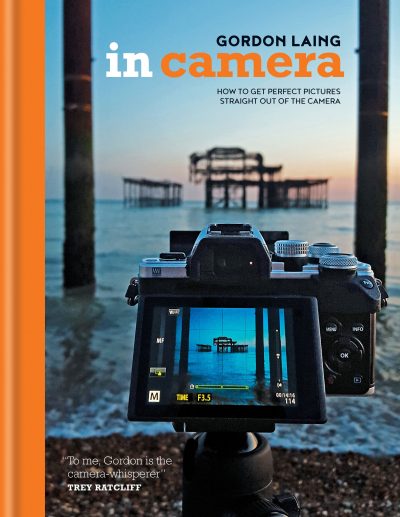
Within the book are 100 photographs, all of which were taken during his travels around Europe and the USA over the past four years. Though he frequently tests DSLRs and compact cameras for his website, every single image in this book was taken with a mirrorless camera. This is because he switched to mirrorless for his personal photography eight years ago, a move which he described in a recent conversation with us:
A major driving force in my adoption of mirrorless cameras was full-time electronic composition, allowing me to see exactly what I was getting – there was no excuse to get it wrong. This coupled with steadily improving processing engines meant I could increasingly capture the images I wanted all in-camera, which in turn inspired the book and its name.
Indeed, throughout In Camera, Gordon regularly turns the spotlight on the latest features found on mirrorless cameras, such as the tilting touchscreen and live view, to show how they can facilitate the photography experience for great in-camera results. Another good example is the Live Composite mode found on Olympus cameras, which he used for his beautiful light painting on page 33.
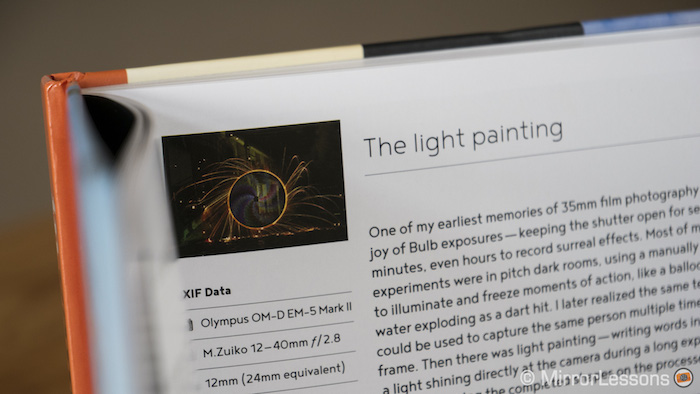
Landscapes and architecture feature heavily in this book but you will also find a wide variety of other genres including food, street, low-light, long exposures, astrophotography, and action. Personally, I would have liked to see a few more portraits, as correctly calibrating skin tones in-camera can be difficult, and perhaps an example of 1:1 macro taken using the recent ‘focus stacking’ feature of the latest Olympus and Panasonic models but otherwise the balance of genres is spot on.
To accompany each photograph is a description of where it was taken, why Gordon felt inspired to capture the scene, tips and tricks, potential pitfalls, and a personal anecdote to lighten up the technical material. He even includes the EXIF data, so that you can quickly refer to his settings when you encounter a similar scene and aren’t sure how to capture it. Even beginners should have no trouble whatsoever following Gordon’s explanations, as long as they have a basic understanding of the three elements of exposure (aperture, shutter speed and ISO).
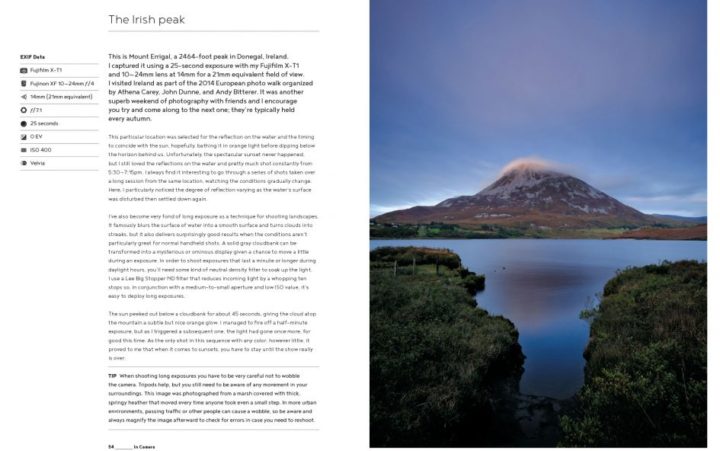
As for the overall presentation, I found it very elegant, with a good balance of beautiful images, text and blank space. The print quality is top-notch and does justice to the colour profiles of the various cameras. In particular, I love the reproduction of Fujifilm’s colourful and punchy Velvia film simulation mode, as seen in the example of the Miami beach hut on page 84.
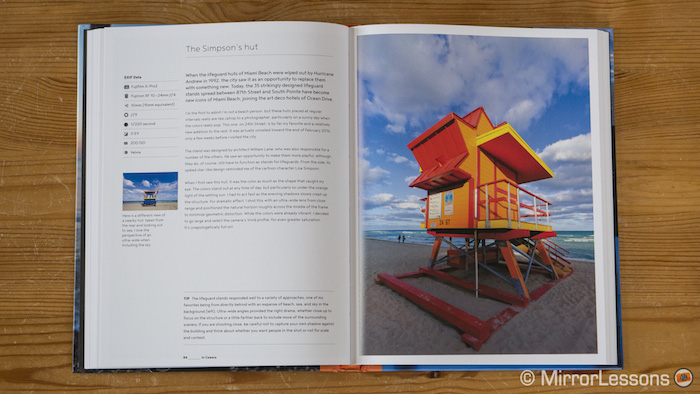
Perhaps the only aspect I would change about In Camera is the organisation of the images: I feel it might have made more sense to group them according to genre to add a thread of continuity. That said, there is a handy index at the back, so it is possible to search for images by genre, location, settings or camera model without too much effort on the part of the reader.
For this review, Gordon kindly provided us with a hardcover version of In Camera but there is also a Kindle version available for download. Personally speaking, I would recommend the electronic version if you plan to use this book as a reference out in the field because you can easily download it to your smartphone and scroll to your section of interest when faced with a challenging scene. Otherwise, I would suggest the hard copy so that you can experience the full effect of the printed images. Our copy has found its place on our coffee table and we flip through it often!
In Camera: How to get perfect pictures straight out of camera is now available for purchase from Amazon and Amazon UK. You can find out more about the book by visiting the dedicated page on Camera Labs.
To stay up to date with Gordon’s camera reviews and travels, we invite you to follow his website Camera Labs, and his Instagram and Twitter accounts.
